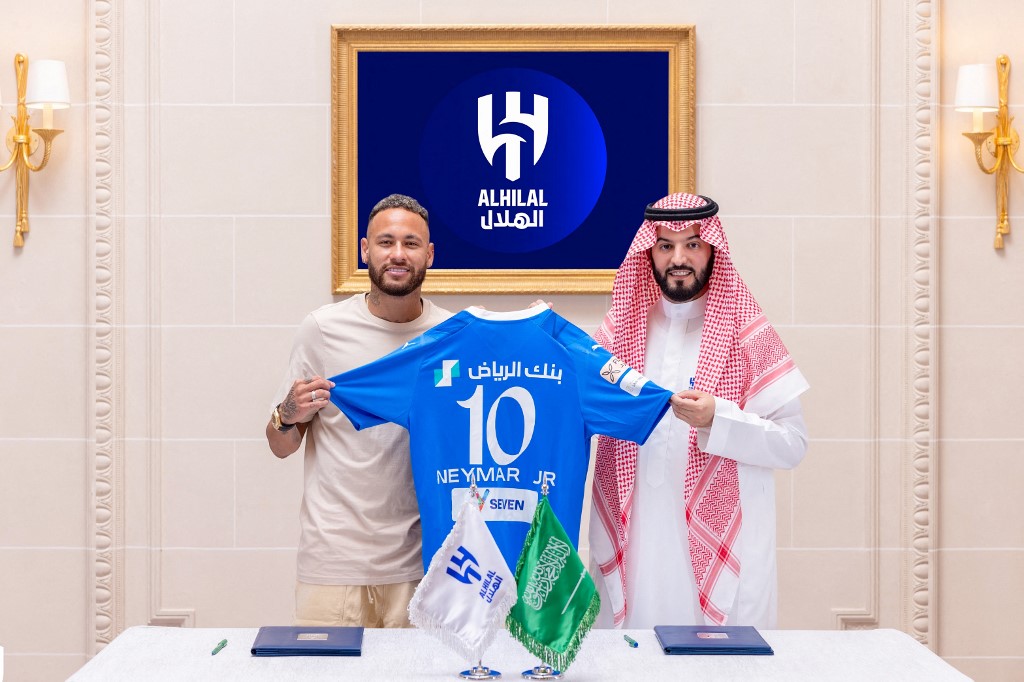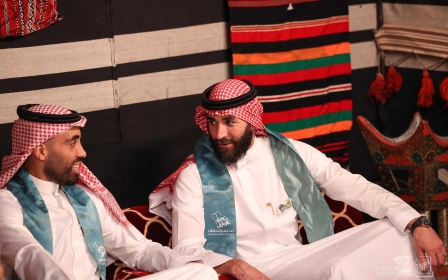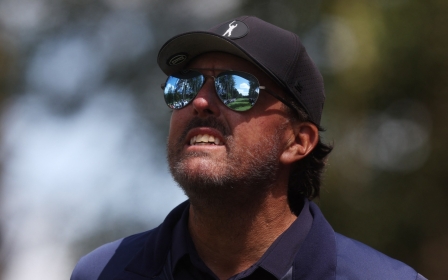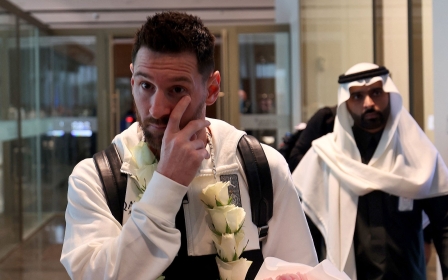Saudi Pro League: Why even Ronaldo, Benzema and Neymar can't pull in the fans
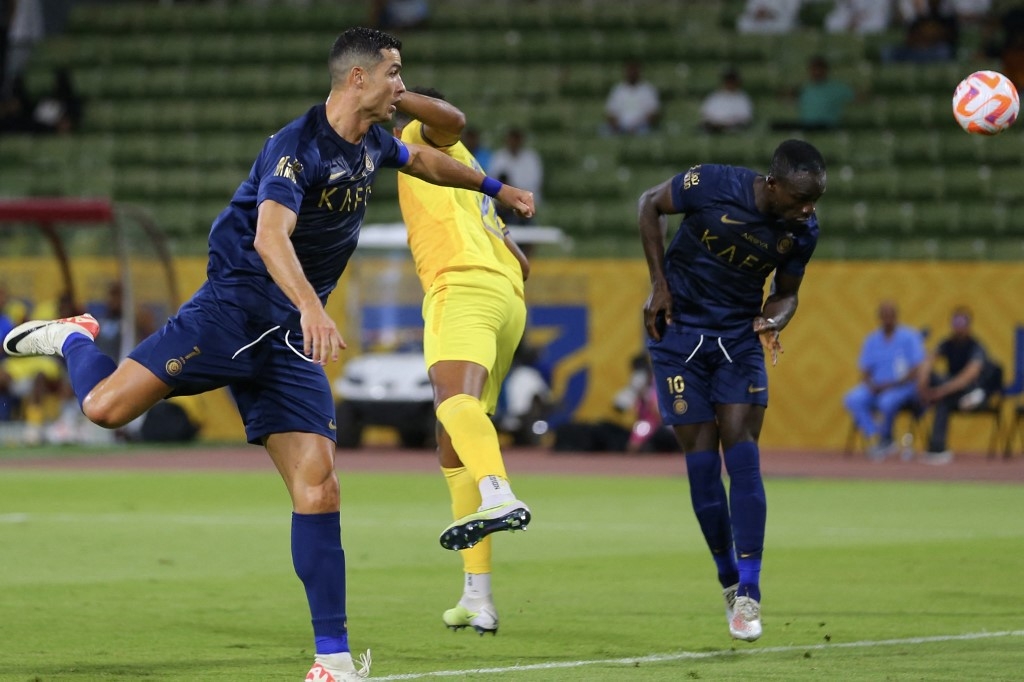
Following a busy and disruptive summer of headline-grabbing acquisitions and power plays, the Saudi Pro League (SPL) is now well and truly underway. There are signs that this strategy is shifting global narratives and media attention towards the big-name arrivals and away from the repressive policies of the Saudi regime.
However, the organisation faces significant challenges and the project is still a considerable way off from fulfilling its ambitions.
In the past two years alone, it is estimated that Saudi Arabia has spent at least $6.3bn (£4.9bn) on sports deals, ranging from football, golf and boxing to Formula 1 and esports.
Public statements by Saudi authorities, including Crown Prince Mohammed bin Salman (MBS), have offered glimpses into some of the aspirations behind the SPL project. MBS claimed in a recent interview with Fox News that the contribution of sports to the Saudi economy had grown from 0.4 percent of GDP to 1.5 percent.
According to MBS: “If you want to develop tourism, part of it is culture, part of it is your sports sector, because you need to create a calendar.”
New MEE newsletter: Jerusalem Dispatch
Sign up to get the latest insights and analysis on Israel-Palestine, alongside Turkey Unpacked and other MEE newsletters
Saudi Arabia has set itself the target of attracting 70 million international tourists a year by 2030. Only time will tell whether hosting such sports events will help the country to achieve its tourism objectives. However, the strategy of creating a "calendar" of sporting events to attract visitors throughout the year is already taking shape.
The capital city Riyadh will host a boxing match between the current WBC heavyweight world champion Tyson Fury and Francis Ngannou in October. In November, the eastern city of Dammam will host an international handball tournament, the Super Globe. The following month, both the Fifa Club World Cup and Saudi Arabia’s first ATP tennis event, the Next Gen finals, will be held in Jeddah.
Modest returns
Carlo Nohra, the chief operating officer of the SPL, has stated that the target for football in Saudi Arabia is to become a “net contributor to GDP and not costing the country money”. While this is the long-term aim, the initial return on investment from the SPL has been very modest.
For a start, average crowd attendance at SPL games, according to Transfermrkt, shows mixed results. While the average attendance has more than doubled at Al-Hilal’s King Fahd International Stadium, up to 25,850 compared to last season, it is still way below the stadium capacity of 68,752. Conversely, it has halved at the King Abdullah Sports City, home of current champions Al-Ittihad.
Football is hugely popular and long-established in Saudi Arabia, so it could be that the novelty of attending a game to see one of the new global superstars, such as Cristiano Ronaldo or Karim Benzema, has already started to wear off.
Another theory is the sudden influx of cultural and sporting events has saturated potential growth in any single area of the sports sector.
There is also something to be said about the Public Investment Fund (PIF) channelling its investment through four of the biggest clubs in the SPL - creating uneven contests and less excitement such as Al-Nassr’s 5-0 victory over Al-Fateh and Al-Hilal beating Al-Riyadh 6-1.
However, if Saudi fans are not filling up stadiums across the country on a regular basis, this creates several issues.
Matchday income from gate receipts remains steady rather than increasing exponentially and the atmosphere is less appealing for visiting international fans. Most importantly though, it impacts the quality of the product as a spectacle if the atmosphere is flat and the stadium is half empty and therefore has a knock-on effect on overseas broadcast deals.
The SPL has commissioned US sports management group IMG to sell its media rights internationally, the same global sports company that works with the English Premier League (EPL), offering a hint as to the competition the Saudis would most like to replicate.
The EPL generates in excess of $11bn in global broadcast deals, making it the most lucrative footballing league in the world. One of the main reasons for the global TV deals is the passionate fans who fill the stadiums and create an atmosphere that captivates viewers.
Challenges ahead
In August, IMG brokered a deal with the global subscription streaming platform DAZN, who bought the exclusive rights to screen the SPL in the UK, Germany and Austria - the first time an overseas broadcaster has purchased a whole season of Saudi football.
DAZN reportedly paid $500,000 for a one-year deal to broadcast up to three live matches a week and highlights. For now, the Saudis will have to make do with the increased global exposure, because in terms of financial viability and growth, the deal does not even cover two days of Neymar’s reported salary at Al-Hilal.
One can understand why the SPL might have appeared to be a relatively low-risk gamble for a broadcaster. Yet while DAZN is still to publish viewing figures for the SPL games aired on its platform, the audience tuning into the digital highlights on YouTube has been disappointing and way below more established regional competitions, such as Egypt's football league.
The highlights of the opening game of the 2023/24 season between Al-Ahli and Al-Hazem - which included some of the biggest summer signings such as Riyad Mahrez and Roberto Firmino - have been viewed just 7,000 times in almost two months.
Highlights of the opening game of the season between Al-Ahli and Al-Hazem have been viewed just 7,000 times
In comparison, highlights of Egyptian side Al-Ahly’s recent game attracted a quarter of a million views in three days.
Perhaps in recognition of the need to take a step back and compete for viewers from the wider region, six games into the season, Saudi broadcaster and SPL rights holder SSC added veteran Egyptian sports commentator Medhat Shalaby to its ranks. Shalaby is reported to be receiving $50,000 per game for his commentary.
This is illustrative of the challenges ahead for the SPL if it is to become a successful revenue-generating product viewed all over the world.
But it is worth reflecting on the images of world-renowned stars wearing traditional Saudi attire and celebrating National Day on 23 September.
Arguably the positive publicity and reputation-laundering from such events is entirely the point; and for the Saudis, worth every penny.
The views expressed in this article belong to the author and do not necessarily reflect the editorial policy of Middle East Eye.
Middle East Eye delivers independent and unrivalled coverage and analysis of the Middle East, North Africa and beyond. To learn more about republishing this content and the associated fees, please fill out this form. More about MEE can be found here.



